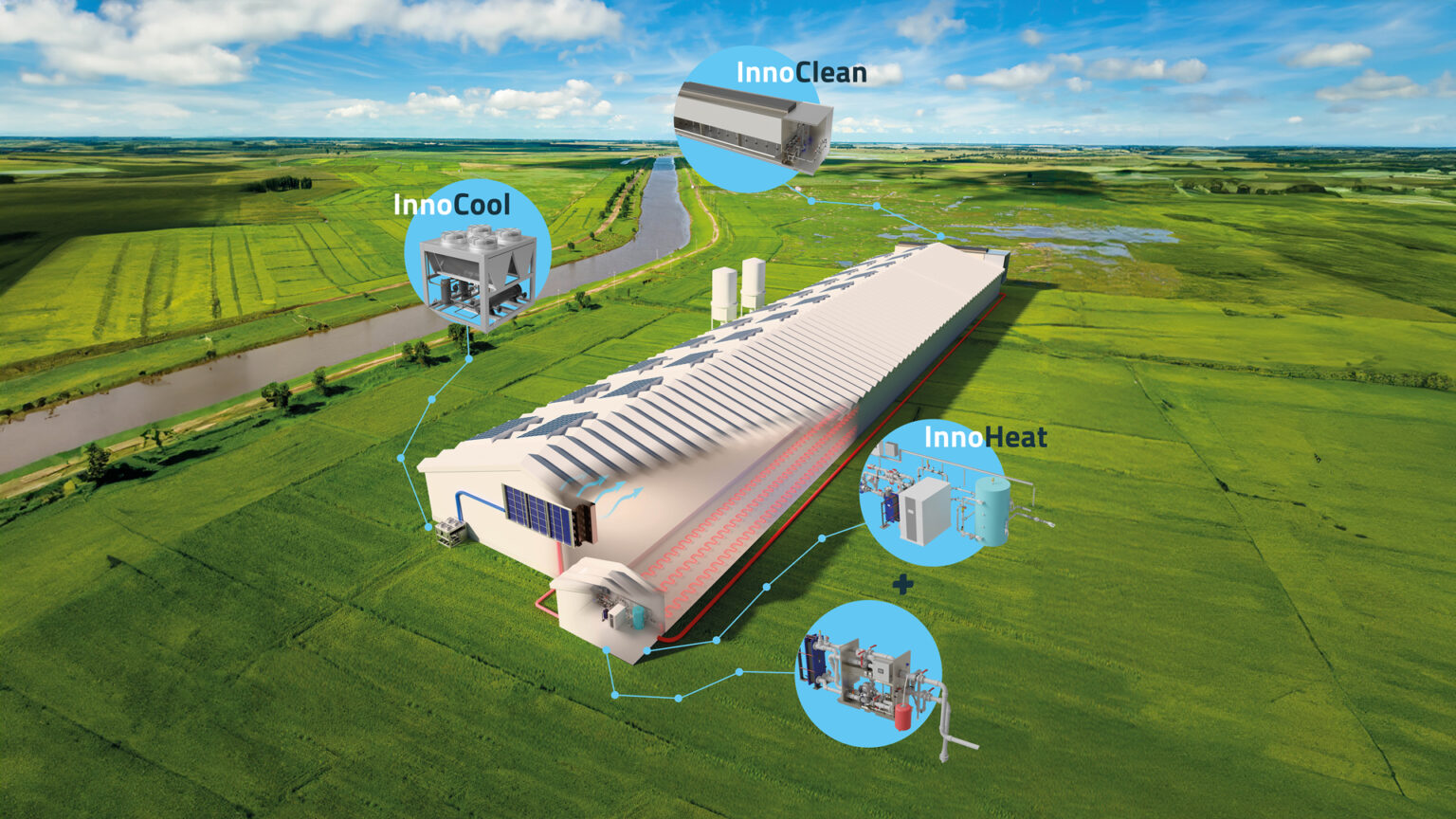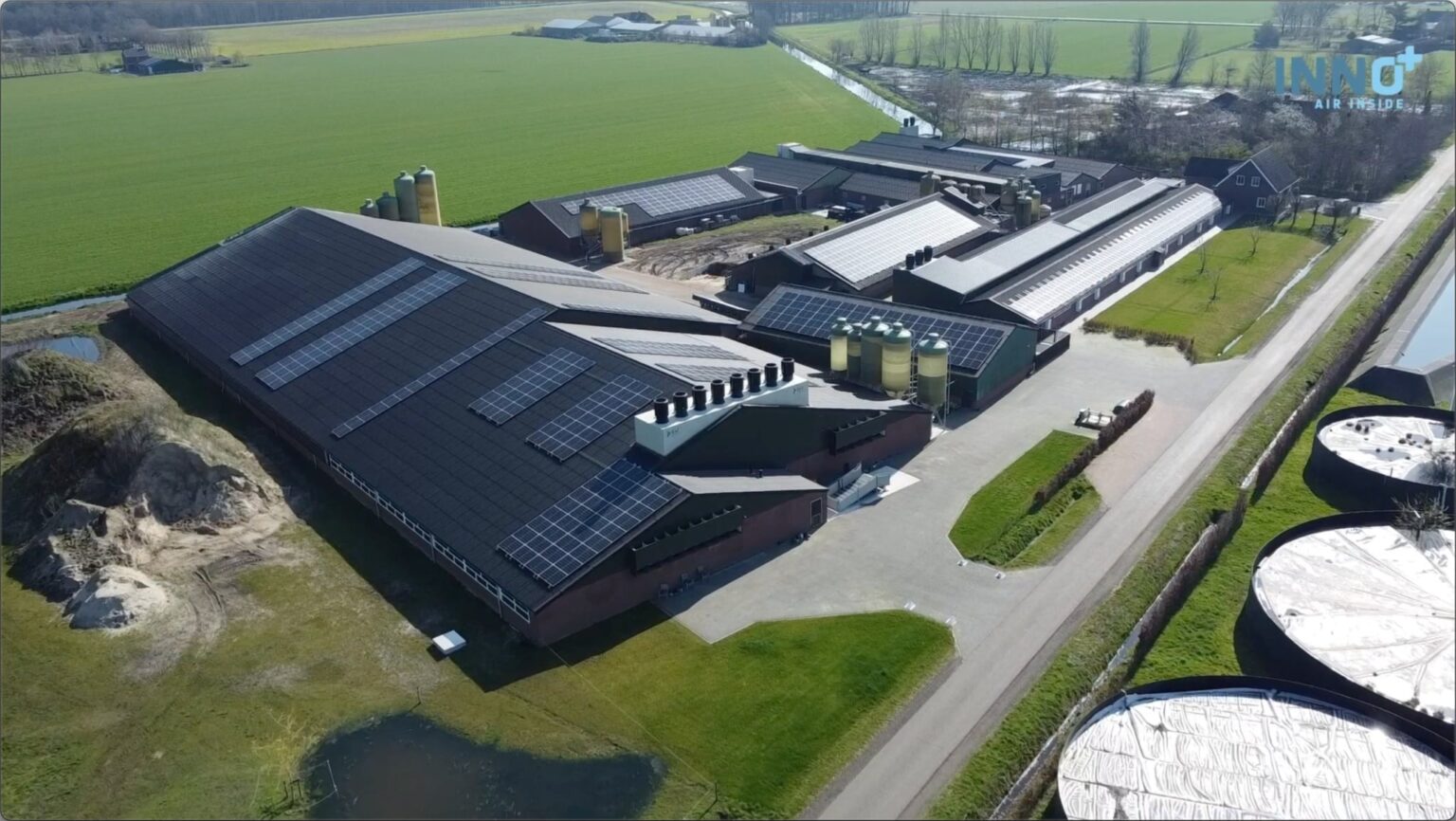
Tail biting in pigs and the influence of barn climate
Poor climate as main cause of tail biting in pigs
Research and practical experience show that poor barn climate is the main cause of tail biting in pigs. Climate conditions such as high temperatures, draughts, poor air quality and varying humidity cause stress, frustration and abnormal behaviour in pigs. This forms the direct breeding ground for tail biting.
- Heat stress due to high temperatures increases irritation and aggression.
- Poor ventilation leads to accumulation of ammonia, CO2 and dust, causing respiratory problems and discomfort.
- Draft or cold causes continuous discomfort and increases stress levels.
An unhealthy barn climate disrupts pigs’ natural behaviour and significantly increases the risk of tail-biting. Without structural climate improvement, other measures are only symptom control.


Effective measures to improve barn climate
The key to preventing tail biting in pigs lies in climate-related measures:
- Climate control: Ensure a stable, comfortable and healthy barn climate by accurately regulating temperature, humidity and air quality.
- Use technology: Make use of systems such as InnoHeat (heat recovery for constant temperature), InnoCool (sustainable cooling against heat stress) and InnoClean (air scrubbers for optimal air quality).
- Monitoring and control: Continuously measuring and adjusting climate parameters prevents fluctuations that could cause stress.
By implementing these measures structurally, livestock farmers can drastically reduce the risk of tail-biting.
We energise farming
Want to know how much you can earn with our Synergy+ technology?
Possible secondary causes of tail biting
Although the barn climate is the most important factor, other conditions can also increase the risk of tail biting, especially if they occur in combination with a moderate climate:
- Lack of distraction material can reinforce boredom.
- Insufficient nutrients or limited access to feed and water can cause frustration.
- Large or mixed groups can increase social unrest.
- Seasonal influences such as heat spikes or temperature fluctuations can amplify existing climate problems.
However, these secondary causes are only relevant when the climate is inadequate. An optimal barn climate is always the first line of defence against tail-biting.

Climate control as a foundation against tail biting
Tail biting in pigs is mainly a consequence of poor barn climate. Other factors may play a role, but are of secondary importance. Only by investing structurally in climate control can farmers effectively prevent tail biting and at the same time work towards more sustainable and animal-friendly pig farming.
Want to know more about how to prevent tail biting in pigs with smart climate solutions? Contact our specialists.

